IN September 2015 News Corp was able to reveal the highly secret day-to-day existence of Australia’s worst killer behind the walls of Risdon Prison. Everyone interviewed for this exclusive story agreed Martin Bryant needed to be segregated from the general prison population — with one insider saying other prisoners would “kill him a spit if they could get to him”.
Lumbering across the concrete floor of his heavily fortified steel cage, Australia’s worst mass killer cuts a lonely and pathetic figure as he fumbles a play with a prison issue footy.
At 48, Martin Bryant’s wavy blond hair is gone, the slim build of which he once boasted has given way to flab and a pendulous gut, and his entire world is confined to the Mersey unit of Risdon Prison’s maximum security wing.
Through a series of interviews with former prison staff, medical carers and fellow prisoners, News Corp is able to reveal the until now highly secret day-to-day existence of Bryant.
Since being sentenced in 1996 to spend the rest of his life in jail for killing 35 people and injuring 23 others in the Port Arthur massacre, Bryant has wreaked a violent path through various wings of Hobart’s sprawling jail, including vicious assaults on government staff and nurses.
Although it has been widely reported Bryant is in solitary confinement, he has in fact been housed in various secure wings of the prison with select other prisoners for almost 19 years. For the main part he is shunned by his fellow inmates, but he has also been known to pay other men with family blocks of chocolate in order to let him perform sexual services for them.

Some jailers refer to him as “Porky Pig” and he has ballooned to 160kg at times. Morbidly obese, his weight fluctuates up to 30kg. Some who have encountered him say Bryant rarely leaves his cell and is drugged to point of being “almost a vegetable”. Others talk of a violent and unpredictable predator who targets the most vulnerable of his fellow inmates.
From a vantage point on public land some 600m from Bryant’s exercise yard, we witnessed him try a few kicks of a football, watch fellow prisoners exercise and try to join their conversations. Mainly, he walked alone, pacing back and forth, rarely glancing towards the yard’s front wall of bars, the only way to see the outside world.
Everyone interviewed for this story agreed he needs to be segregated from the general prison population — with one insider saying other prisoners would “kill him a spit if they could get to him”.
Bryant enjoys the relative protection of the Mersey unit, which is for high dependency inmates, such as those on suicide watch or with mental health issues, and is staffed by both prison guards and health workers, offering a greater level of security from other prisoners.
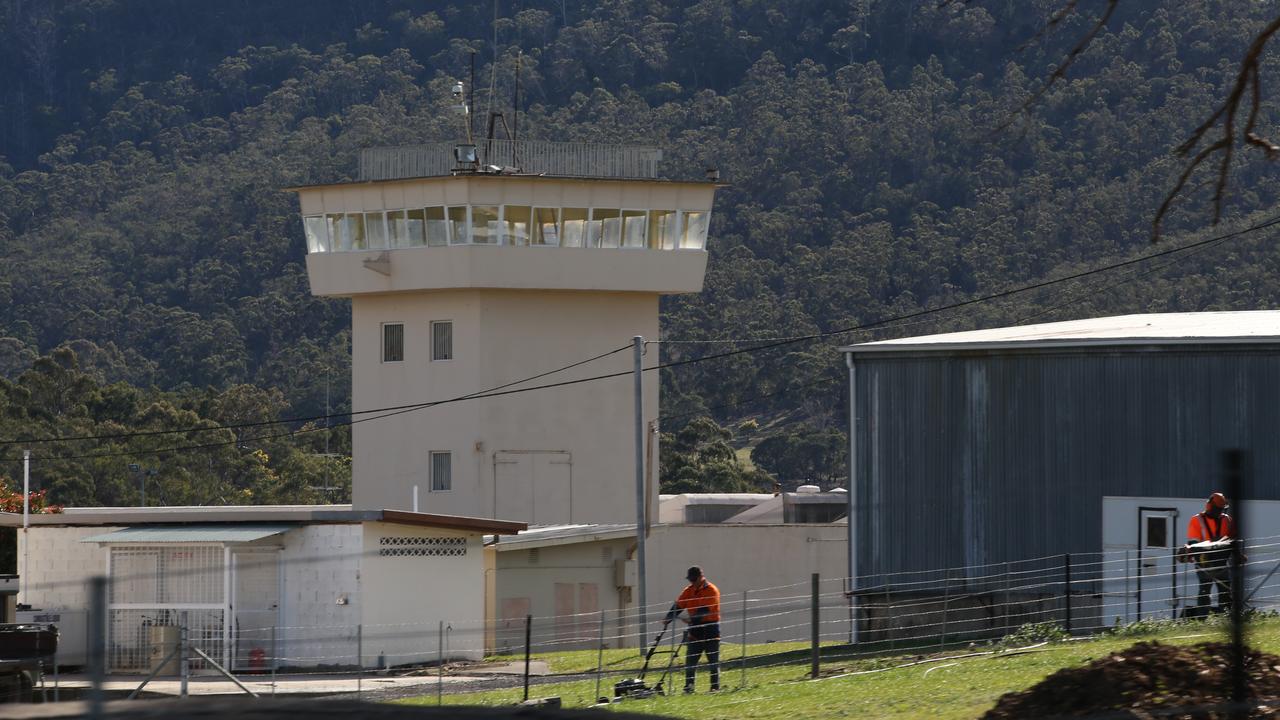
Former prison guard Tony Burley, who left the service after two decades in 2012, said Bryant was among the more highly functioning of his cellmates.
“In this unit, they are colloquially referred to as window lickers,” he said.
“They are like kids in a lolly shop, they just stand there and stare at the officers.
“They are that sort of a prisoner who is not quite all there. But in terms of Martin Bryant, he chooses to act like that.
“There is more to him, he is very calculating. It’s like that saying, the lights are off but there is someone home, as opposed to the opposite.”
Bryant is housed in a 2m by 3m creamy-yellow coloured cell, with his own 32cm television, desk, bookshelf and a concrete slab bed covered by a 10cm thick mattress, sheets, a blanket and a single pillow. There’s a shower with a privacy screen, but the toilet — which has a reinforced backing to stop it being pulled out for an escape route through the plumbing — is visible from a small window in the steel door. Inmates have unlimited hot water and toilet rolls.
Bryant and up to 11 fellow occupants of the Mersey unit are woken at 7am to eat a breakfast pack of cereal delivered the night before and sometimes guards will hand them a hot cup of tea or coffee as well. Once prison officers finish a perimeter check, inmates are usually allowed access to an exercise yard.
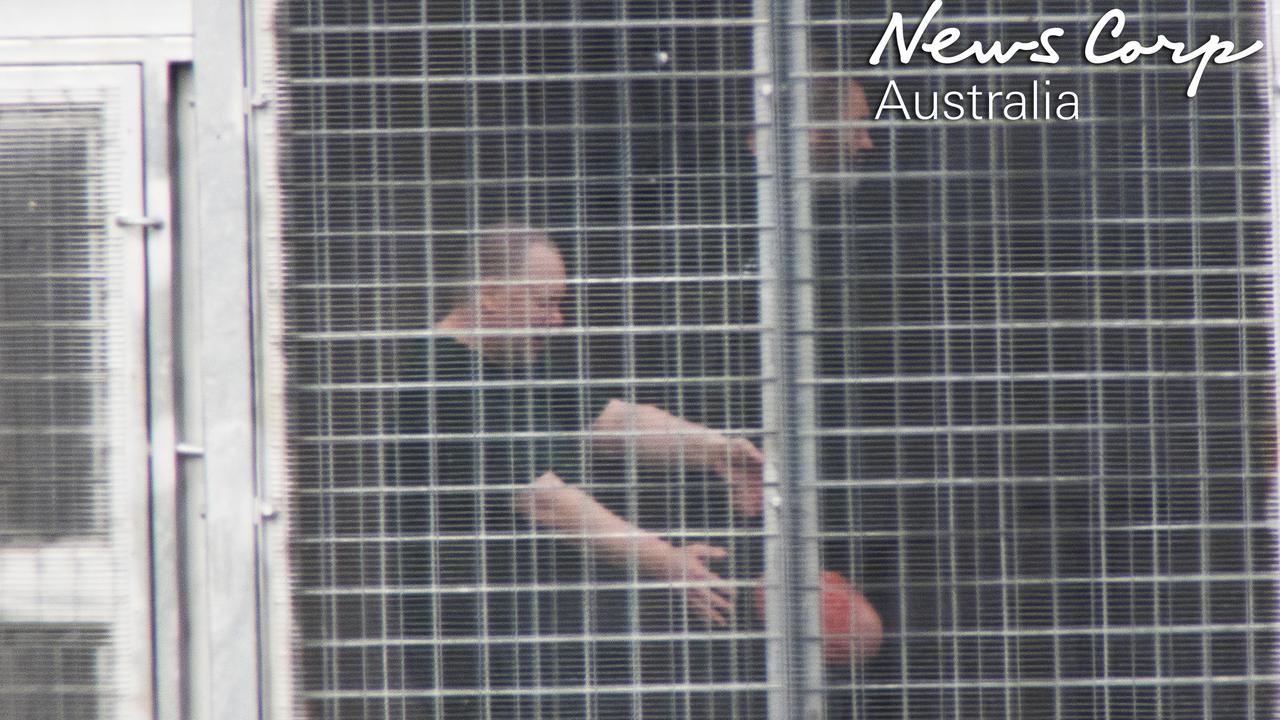
In Bryant’s case this is a 10 by 15-metre wide caged compound containing sparse exercise equipment and a few stools. It is visible from public land, from where News Corporation obtained these images.
Lunch is delivered from an off-site catering section around 11.15am and prisoners are again locked down for the day’s second perimeter check, before being allowed access again to their outside areas from 1.30pm to about 4.30pm. They are then shut in their cells for the night and given a hot “aeroplane style” dinner through the hatch in their door, usually a variation of meat and vegetables, according to Burley.
Previously head of Risdon’s tactical response group, Burley says Bryant’s position in the prison is “right at the bottom of the food chain. I can’t think of anyone who would piss on him if he was on fire”.
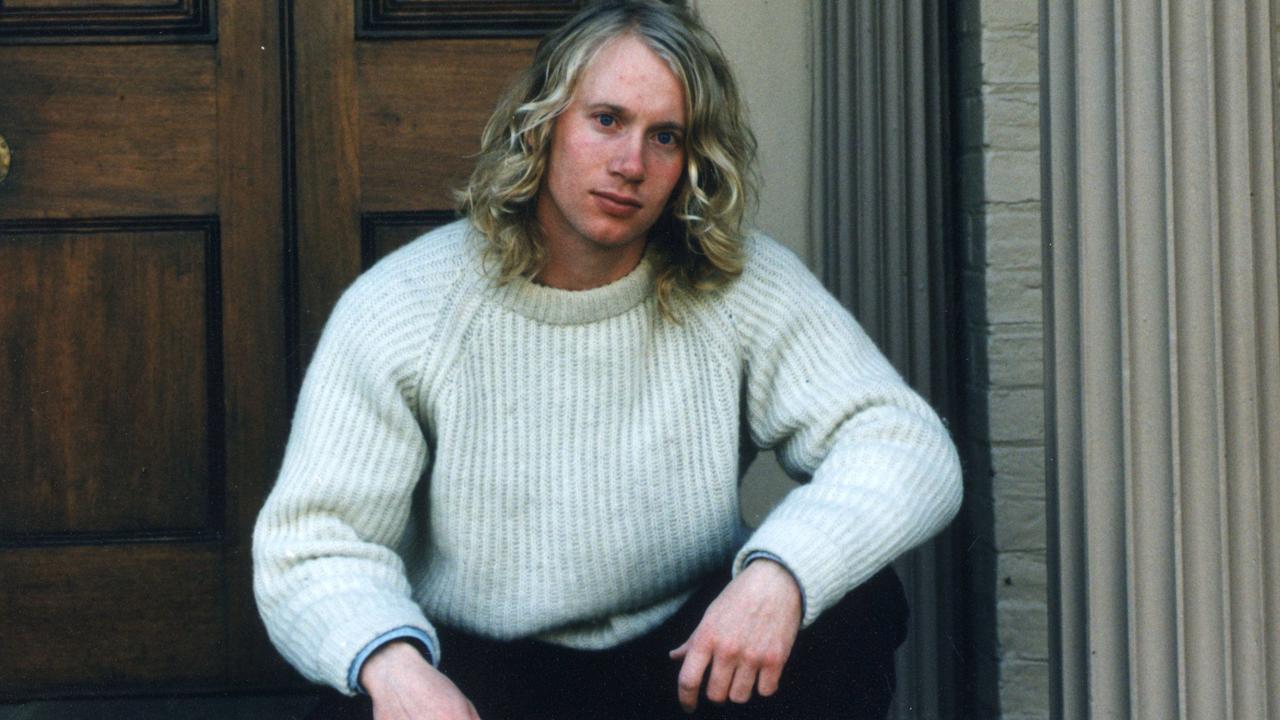
When he was 29, Bryant’s reaction to a world in which he couldn’t find a way to belong was to spend months planning his revenge. Left alone but relatively wealthy after the death of his benefactor and only friend Helen Harvey, an elderly and eccentric heir to the Tattersalls lottery fortune, Bryant stockpiled military grade automatic weapons. He then headed out on a sunny Sunday April morning in 1996 to his childhood holiday haunt of Port Arthur and turned the weapons on both random strangers and those he believed had wronged him. He was later described by experts as having the emotional and intellectual age of a five year old.
Reformed safecracker and former prisoner Tony Bull, 50, has spent much of his adult life in and out of jail and described Bryant as apparently childlike with a cunning edge.
“It was hard to reconcile this bloke with the one who had done all that killing. To be honest you wouldn’t have thought he had it in him,” Mr Bull said of his first encounter with Bryant, a few months after his killing spree.
“In some ways he seemed like a dumb child — but then, he’s a very good chess player, so he’s got a lot more going on than you would think.”
Mr Bull said Bryant had been the target of several assaults and that he “wouldn’t stand a chance” in the general prison population, who would be all too keen to abide by the prison code which targets men who hurt children and women.
KILLING SPREE
Bryant slaughtered 20 people and injured another dozen in the first two minutes of opening fire with a Colt AR-15 in the Broad Arrow Cafe and gift shop after his 1.10pm arrival at the site. Already he had stopped by the nearby Seascape guesthouse — where a fiery siege would end in his arrest some 19 hours later — and killed owners David and Sally Martin, childhood acquaintances at whom he was angry for not selling his family their land.
Visitors to Port Arthur thought the gunshots were part of a re-enactment, some of them streaming towards the cafe to watch. Others realised what was happening and ran for their lives, but Bryant shot at anyone he could see moving as he made his way to the carpark’s tourist-packed coaches. Another four victims lost their lives and seven more were shot as he made his way to where he had parked his yellow Volvo station wagon, but it was the murder of two little girls and their mum near the site’s toll booth that came to crystallise the true evil of his spree.
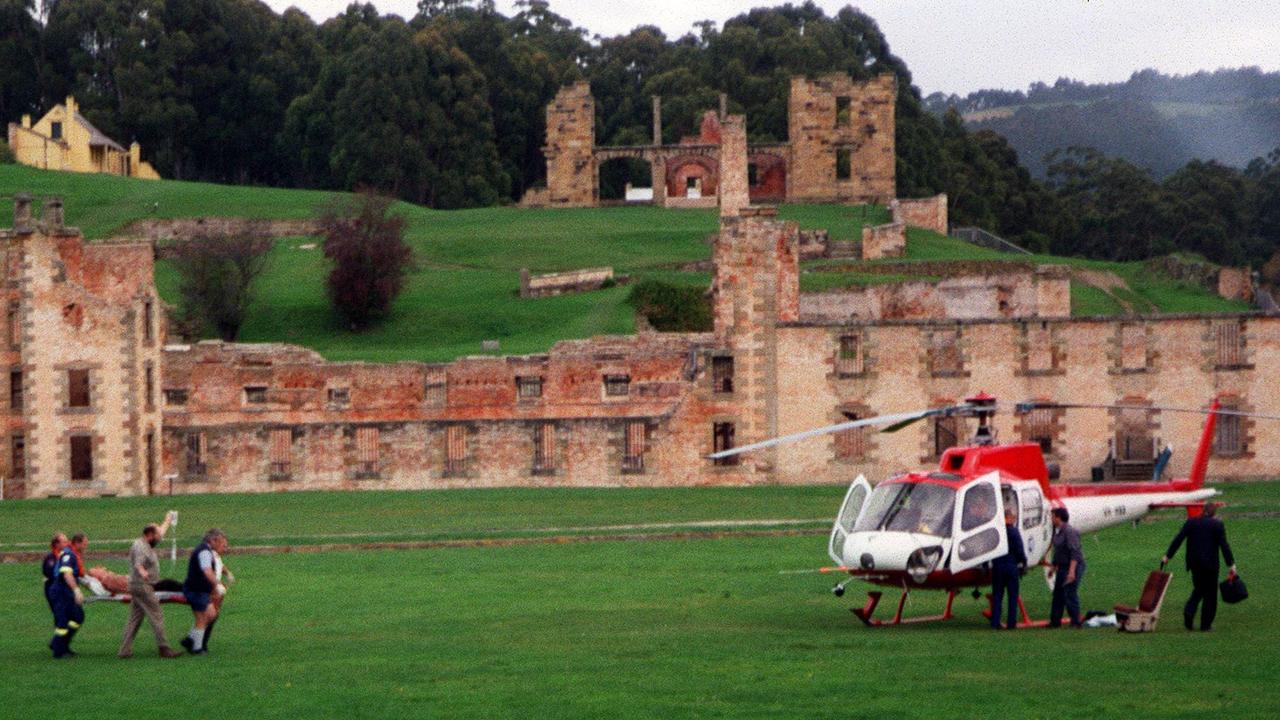
Bryant shot first the mother then both girls, before going on to kill another four bystanders and fleeing the site.
Mr Bull said, for inmates, that is the tipping point.
“Mainly he would be the target because he killed those poor little kids,” he said.
“The fact is he’s Martin Bryant, and in some circles, to kill Martin Bryant, well you could hold your head up.”
Bull said he had struggled over the years to describe Bryant, and he has had plenty of practice, given that “What’s he really like?” is one of the first questions he was asked when he would talk about his time at Risdon.
“He acts normal. He walks normally and holds himself normally, but when he opens his mouth there’s just nothing really there,” he said.
“That’s why it’s hard to understand how he could have done what he done. That was cold and calculated and he was running off a plan, and I don’t know how he would have been able to … be so premeditated to follow it through to the end.”
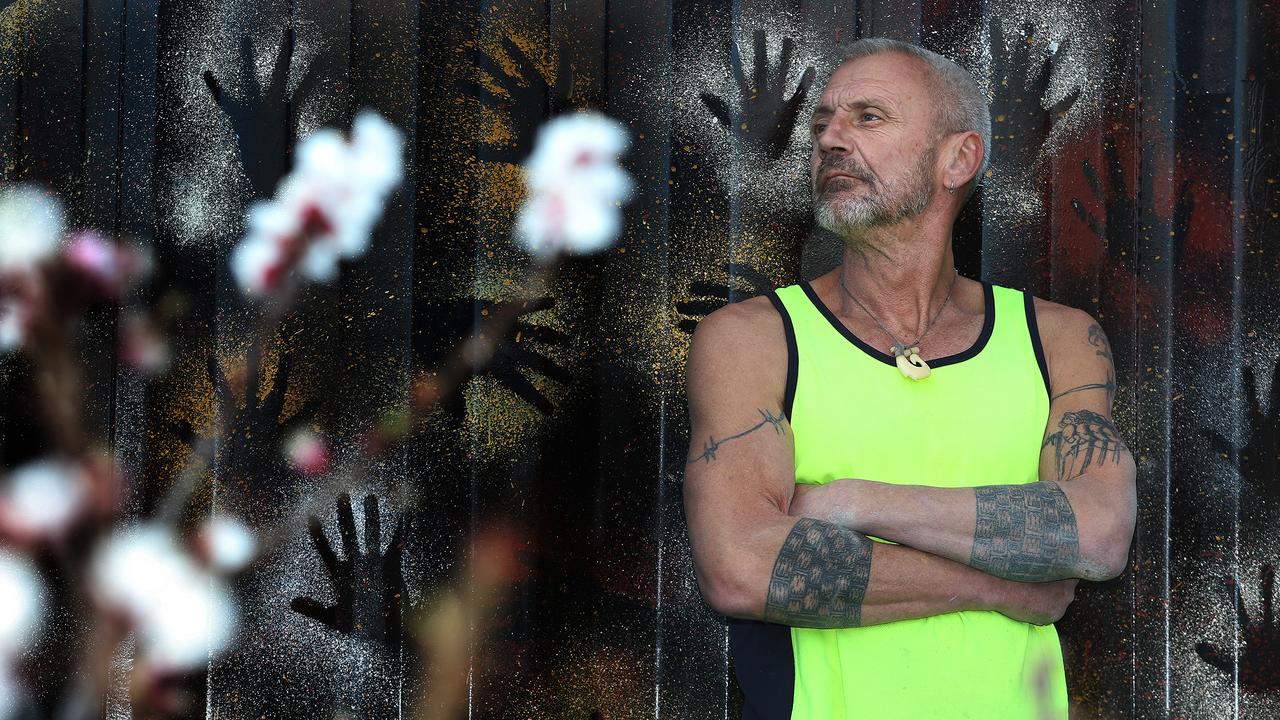
Bryant has reportedly made several suicide attempts and he has ongoing health issues which have seen him transferred under armed guard to Royal Hobart Hospital several times for treatment.
“When he is in the public hospital it’s very difficult for all of us,” said one former nurse, who did not want to be identified because of a media ban for public servants imposed by the Tasmanian government.
“A lot of us were here on the day of the massacre and we lost people we loved. Having to look after him is awful.”
Another former nurse described the terror her colleagues felt when their roles required them to care for him in a prison facility.
“This particular part of the jail where it happened is a little more comfortable, they try to make it a little more homely to help keep the inmates calm,” she said.
“That means there is carpet, a bit more space for them. But the problem is with carpet, you can’t hear people coming at you.
“That’s how he managed to get one of us, just by running at them from behind.”
Bryant has been involved in several assaults and was part of an attack in February that left a male nurse with a fractured jaw. That nurse may not be able to return to duties, another innocent with lifelong scars from their encounter with the hate-filled loner.
Although he is sent a lot of mail — from ghoulish “fans” including teenage girls and media requests from around the world — very little is handed on to him and is instead stored to be handed over on his far away release date. It’s standard procedure for the night shift prison guards to read every piece of personal mail that is sent to inmates before passing anything on, according to Tony Burley.
He receives few visitors other than his mother, Carleen Bryant, although it is unclear how long it has been since they have seen each other, with several sources saying it has been years.
Mrs Bryant was unwilling to be interviewed for this story but friend Joan Errington Dunne said she had managed to put the pain of her son’s unfathomable crime behind her and live a good life.
“She is a remarkable woman,” said Mrs Errington Dunne.
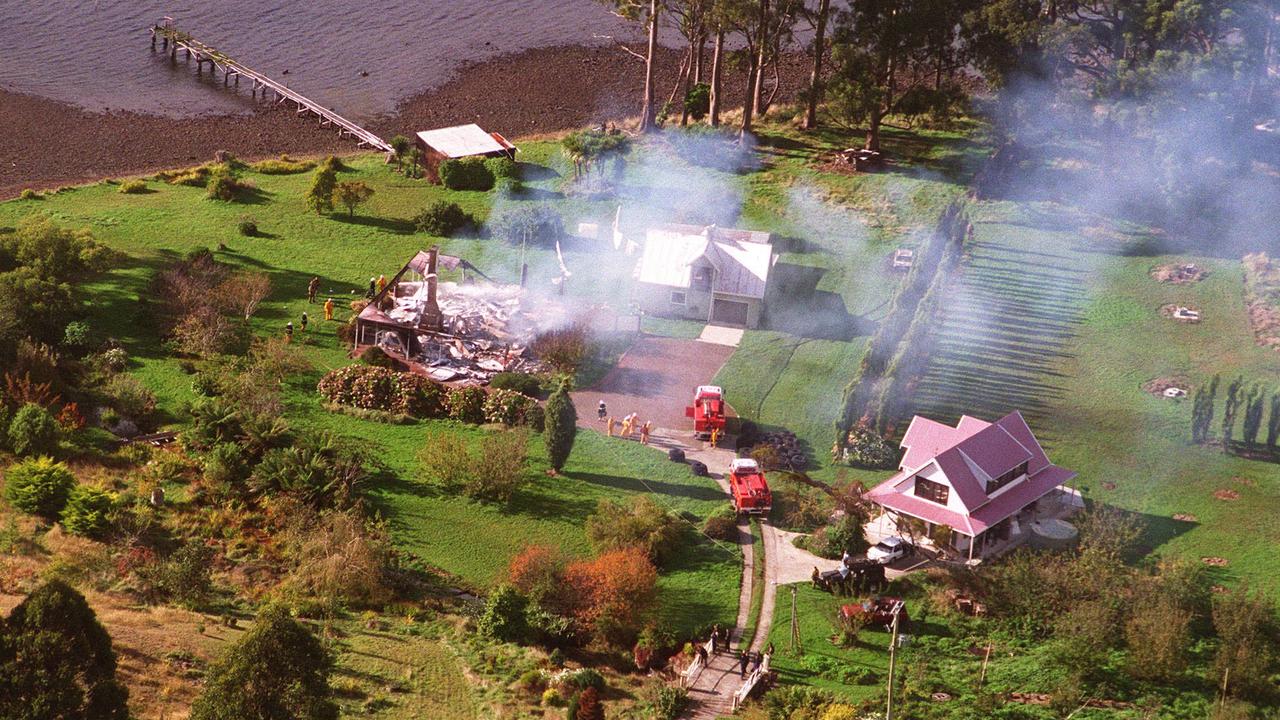
SILENT TREATMENT
Martin Bryant’s role in the Port Arthur massacre is the unspoken story in Tasmania, where the government and much of the state has for the past 19 years refused to talk about him.
This is mainly out of sensitivity for the victim’s families, many of them still part of a small community that was devastated by what was for a time the worst mass shooting by a single killer in the world. But it’s also their way of punishing Bryant — a spurned attention seeker who from the moment of his arrest fixated on the notoriety in which he still revels.
“It is a deliberate policy to not comment on him in any way,” said one government source.
Any mention of Bryant is bound to be polarising and this was most recently evident in the outcry over the awarding of Tasmania’s top landscape prize to artist Rodney Pople in 2012 for a painting of Port Arthur which included an image of Bryant with a gun.
But some in Tasmania think it’s time to start talking about what happened all those years ago at the former penal colony 90 minutes drive from the capital.
“It was a terrible thing that happened in this community but it needs to be discussed,” says outspoken prisoner advocate and barrister Greg Barns.
“We are not the only community in the world that’s had this kind of tragedy and to simply have a form of censorship over it is absurd.”

We can’t quote any current government employees who deal with Bryant, because under Tasmania’s Public Service Act it is a criminal offence to talk to the media.
“The secrecy over the public service in this town is disgraceful and public servants ought to be able to speak out about these issues,” says Barns.
“And particularly with Port Arthur. If they were involved with Port Arthur they ought to be able to talk to the media about it.”
Barns is among a small section of the legal fraternity who question Bryant’s representation at his emotion fuelled trial in 1996. Bryant initially pleaded not guilty, in what was widely seen as a ploy for further attention and the opportunity to see his crimes played out in public. His initial legal aid representative quit and was replaced by then lawyer John Avery, who convinced Bryant to change his plea to guilty shortly before his trial was to begin.
Several years later, Avery himself was jailed for fraud, which he claimed had been due, in part, to his role representing Bryant. He would also not be interviewed for this story.
“I think it’s important for there to be different perspectives about Port Arthur,” says Barns, adding that Bryant likely had grounds to mount an insanity plea.
However, prominent Hobart defence lawyer Kim Baumeler is dismissive of any attempt to recast Bryant’s defence.
“It’s all well and good to be wise in hindsight,” she said.
“I can understand why he pleaded guilty and why he had that advice to plead guilty. Certainly, the level of planning would seem to indicate that there were thought processes and he was able to think about things.
“Once you have ability to think about things and knowing what you are doing and being able to plan, then mental health, insanity defences start to go out the window.”
“He went down there planning to do something and he carried it out.”
SET UP?
But while some question whether Bryant should have used an insanity defence, there are also a surprising number of Tasmanians who point to a bizarre conspiracy.
Among the more popular, though wacky, theories is a well-documented internet campaign describing Bryant as a patsy and blaming the killings on the anti-gun lobby. Some go so far as to claim Bryant has been living in safe house as a reward for his part of the conspiracy.
Following the clearly troubled Bryant’s frenzy with a stockpile of unlicensed high powered firearms purchased from the gun shop 300m down the street from his home, then Prime Minister John Howard enacted tough anti-gun laws. Licensing requirements were tightened and the private ownership of semi-automatic rifles and shotguns as well as pump-action shotguns banned.
There was also a gun buyback which saw more than 600,000 firearms taken off the streets and is considered among Howard’s defining legacies. The numbers speak for themselves with the firearm mortality rate dropping from 2.6 per 100,000 in the mid 1990s to just under one per 100,000 now, according to the Australian Bureau of Statistics.
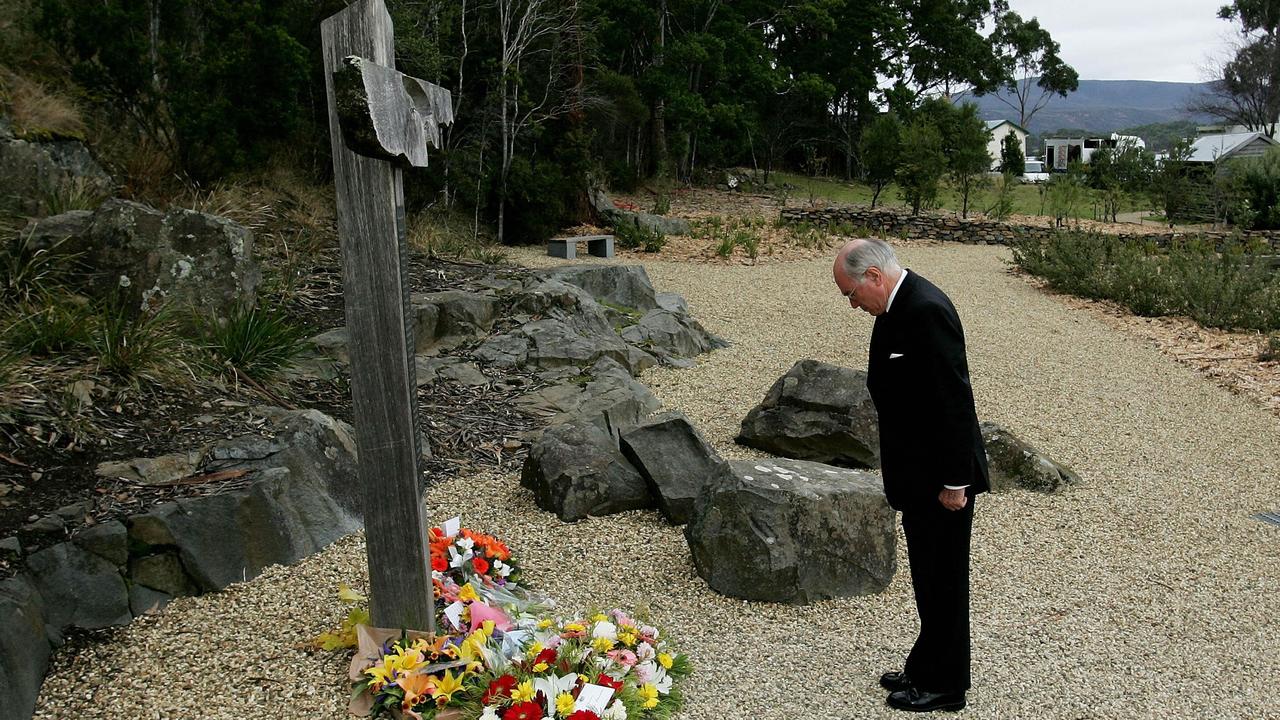
In the United States, where the death rate by firearms is more than ten times as large, Howard has been cited by President Barack Obama as a visionary. There has not been a mass shooting since Port Arthur and the firearm suicide rate has declined by 80 per cent.
In response to recent calls from federal cross bencher David Lleyonhelm to loosen these restrictions, Mr Howard last week discussed how he felt watching the massacre in 1996.
“Like everybody else, I was just stunned. I pretty quickly felt I had to do something,” he told interviewer Andrew Denton at an anti gun function.

LIFE INSIDE
Bryant started his term of 35 life sentences in the old Risdon jail, described by many as hell and rivalling Port Arthur for barbaric conditions. Nestled in a valley about 10km from Hobart CBD, the previous jail was “the worst place on earth”, according to former inmate Tony Bull.
“It’s the coldest place I have ever been in my life,” he said.
Kim Baumeler agrees, saying “you would literally try to adjourn matters and adjourn matters if people were going into custody so that they wouldn’t start in winter — it was just that cold.”
The new jail, unveiled in 2006, is by all accounts warmer, but it retains its reputation as one of Australia’s worst. There is currently an inquest into three recent deaths in custody and lockdowns are a continuing regular occurrence following a siege last month.
Inmates may get three meals a day and their own TVs, but Greg Barns described the Mersey unit as “wholly unsuitable” for long term prisoners.
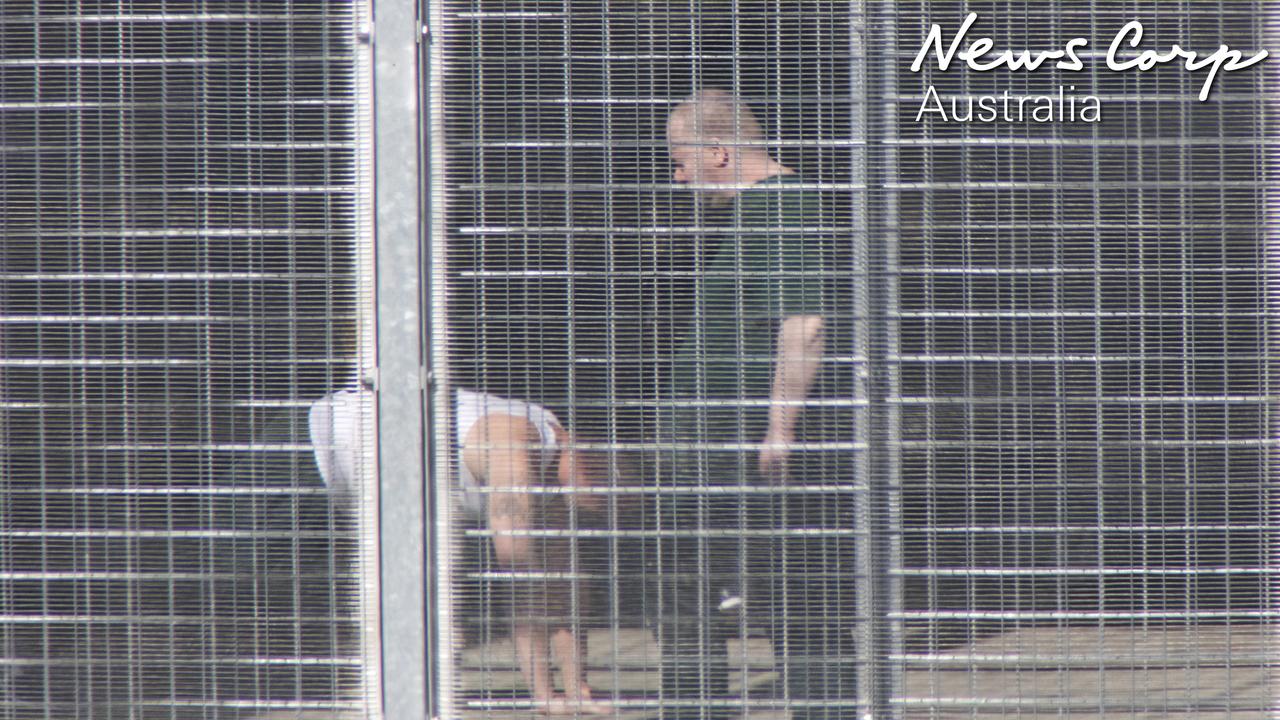
“The Mersey unit is a unit where your have people who are transitioning, often from maximum through to minimum security,” he said.
“It’s not designed for people who will be there 20, 30 years.
“There are greater levels of restriction so your hours out of cell are less than they are in other places, the opportunity for rehabilitation are less as they are subject to these lockdowns more often. It’s not a place you would want to be in for more than 12 months.”
If the past two decades are anything to go by, Bryant will at some stage be moved to a new unit at Risdon. But none of this is likely to be confirmed by officials, who have refused to comment on any aspect of this story.
But with the approach of next year’s 20th anniversary, all eyes will again turn to Port Arthur and requests to talk to Bryant will again flood in from across the world, as they do each year. The state government has begun planning how the event will be marked, according to a source, with a memorial service being considered at site.
But it will be just another day in a cage for the man whose savage cry for attention caused so much pain.
- This story was first published by News Corp Australia in September 2015.
- The year after this story was published about 500 people gathered at Port Arthur as Australia remembered the lives lost 20 years earlier

Child rapist, killer walks free from prison after 38 years
A convicted child killer has walked free from prison after 38 years behind bars for raping and murdering nine-year-old Deborah Keegan in her western Sydney bedroom.
Here’s what you can expect with tomorrow’s Parramatta weather
As spring moves into summer what can locals expect tomorrow? We have the latest word from the Weather Bureau.